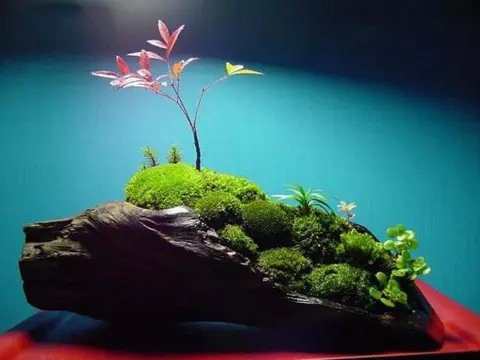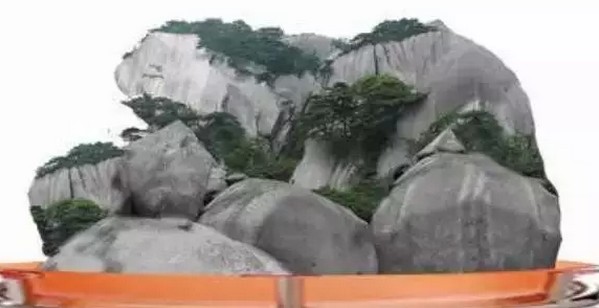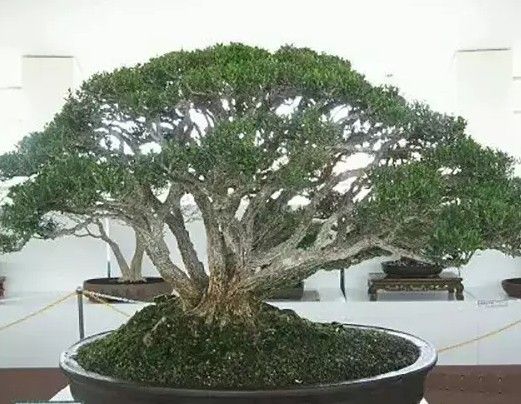The method of "spot moss" of landscape bonsai
The mention of moss bonsai can not help but remind us of Japanese-style horticultural landscape, lovely shape, green bonsai by people's imagination to add different themes, a small container is a miniature small world. The advantage of making moss bonsai is that we have the care and patience to hold it in our hands and enjoy the fresh little world at any time.

Moss bonsai often has extraordinary performance on the balcony and wooden deck, and the performance in the garden is not weak, so it is suitable for half-hidden and half-hidden in hairpins and resveratrol bushes. When guests come to the house, it is very pleasant to move them back to the indoor exhibition, bringing green to the living space. Outdoor moss bonsai will grow well in bright, indirect light and moistened by Rain Water, because these are the preferred growing environments for moss. If similar environmental conditions are not available in the garden, just recreate such a small growing environment for them, try to put the moss bonsai in the shade under the tree, or hang it on the porch, and insist on watering and spraying to keep them alive.
Moss is an indispensable part of landscape bonsai. "spot moss" is a common technique for greening landscape bonsai.
There are three main operation methods of "spot moss" of landscape bonsai.
1. Quick moss method: put the bonsai in the rain or in the river, and sprinkle the potato powder evenly on the rocks a few days later. Then wrap the rocks with damp straw or bundles, tie them with nylon rope, spray water and place them in a wet place. In the future, it is often sprayed with tap water or rice washing water. In this way, mosses can be produced in about two weeks in the summer classics, and in about a week.
2. The method of inoculating moss: select several pieces of nutritious soil and mix them into a paste, then shovel the moss from the wet place, mix it well in the paste mud, and brush evenly on the rocks soaked by Rain Water with a small brush. Then put it in a semi-damp environment and often spray water with a fine spray can. Soon the moss will naturally grow and spread. If some nutrients such as potato juice are added to the moss, the moss will grow faster and better.
Another way to pick up moss is to wash and dry the shoveled moss, grind it into a fine powder, sprinkle it on wet rocks or basin soil, and sprinkle some very thin dry soil on it. Then slowly soak the whole bonsai in water, soak it completely, gently pick it up and culture it in a wet place. If the bonsai is too large, you can use a small spray can, gently spray wet, will soon be able to produce lush moss.
3. The natural coating method: put the rocks in a shallow basin, often sprinkle with fat liquid soaked in rice water, vegetable leaves and bean shell water, and moisturize with plastic bags after each shower. If the temperature is around 20 ℃ and you can see a little sunshine in the morning and evening, the rocks will become green and fluffy in a month or so. Although this method takes a long time, the moss grows naturally without trace, just like Tiancheng.
When moss in mountain and stone basin scenic spots, you should also pay attention to:
The moss for planting should be collected at the edge of the pool, at the foot of the wall, tree trunks and under the forest with good environmental conditions. The planting position of moss should be in accordance with the natural law, pay attention to the changes of primary and secondary, size, accumulation and density, and follow the principle of "mountain-overcast deep valley, Yangtu mountain non-existence". The moss should be trimmed in time to properly set off the beauty of the stone. The moss is suitable for growing in acidic soil. If the moss turns yellow, it can be irrigated with ferrous sulfate solution several times.
Time: 2019-06-04 Click:
- Prev

Decoration and embellishment after the production of landscape bonsai
In the production of landscape bonsai, the theme is generally determined, the preliminary artistic conception is carried out, and then the materials such as pots, stone, plants and accessories are selected, and then the stone is processed and configured, and finally the plants and accessories are embellished. The basin is the main component of bonsai, and it also plays an important role in viewing.
- Next

Winter management of tree stump bonsai
Nowadays, when the weather turns cold, many flower bonsai begin to enter the house one after another and enter the winter management stage. we have seen many articles about the management of tree stump bonsai in spring, summer and autumn, but the winter management of tree stump bonsai is often ignored by people. often in the next spring, when everything recovers.
Related
- Fuxing push coffee new agricultural production and marketing class: lack of small-scale processing plants
- Jujube rice field leisure farm deep ploughing Yilan for five years to create a space for organic food and play
- Nongyu Farm-A trial of organic papaya for brave women with advanced technology
- Four points for attention in the prevention and control of diseases and insect pests of edible fungi
- How to add nutrient solution to Edible Fungi
- Is there any good way to control edible fungus mites?
- Open Inoculation Technology of Edible Fungi
- Is there any clever way to use fertilizer for edible fungus in winter?
- What agents are used to kill the pathogens of edible fungi in the mushroom shed?
- Rapid drying of Edible Fungi

